Vasio (Vaison-la-Romaine)
Q3554931Vasio: Roman town in central France, modern Vaison-la-Romaine.
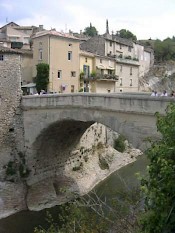
Vasio was the capital of the Gallic tribe of the Vocontii. Its name is very interesting, as it is neither Latin nor Celtic, and therefore very ancient. The town was originally perked on a rock on the left bank of the Ouvèze. The bridge across the river was originally erected in 149 BCE, and is the oldest surviving Roman bridge. It may even be the oldest still extant stone bridge in the world.
After the Roman conquest, the town was rebuilt on the west bank of the river in 20-19 BCE by Marcus Vipsanius Agrippa, the friend and son-in-law of the emperor Augustus.
In the first century CE, Vasio became a rich town. It had a surface of about 75 hectares, which is pretty large. At least five bathhouses, an aqueduct, a basilica, a sanctuary, a bridge, a theater, and a portico have been identified. The streets, flanked by shops, were paved pavement with limestone slabs from a nearby quarry. The western side of one of the excavated streets was covered by the overhang of the first floors of the buildings; shielded from bad weather, pedestrians could walk around.
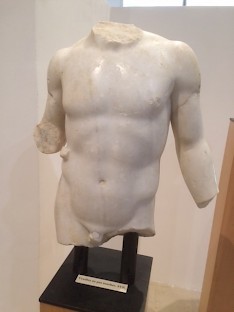
The luxury and scale of urban housing of Vasio exceeds towns like Arles, Orange, and Nîmes, and makes it one of the most remarkable towns in the ancient Provence - although (or because?) it was not very large. An explanation for Vasio's wealth has not been found yet. One of the more interesting mansions is the Villa du paon ("House of the peacock"). It has a splendid mosaic with a surface that measures no less than 33 m².
The theater of Vasio is nestled in the Puymin hill. It dates back to the first century CE and was restored in the third century. It was not very large: it offered accommodation to 6,000 people. Several emperors received a statue in this building: Claudius, Domitian and Hadrian have been identified.
The remains of Vasio were discovered in 1907, when Joseph Sautel started the excavations. In 1924, Vaison added the element "la Romain" to its name. The Vichy government recognized its importance in 1942/1943 and made it a historic monument. A substantial part of the original Gallo-Roman town, including the forum, lies under today's town and cannot be excavated.
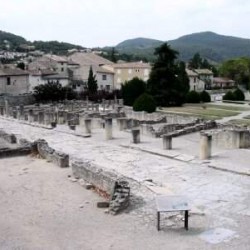 Vaison, Street |
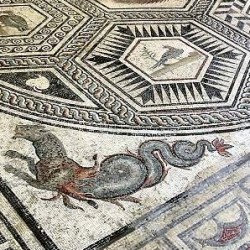 Vaison, Villa du paon, Mosaic |
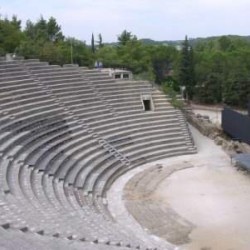 Vaison, Theater |
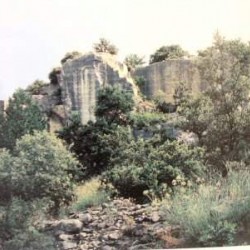 Vaison, Quarry |